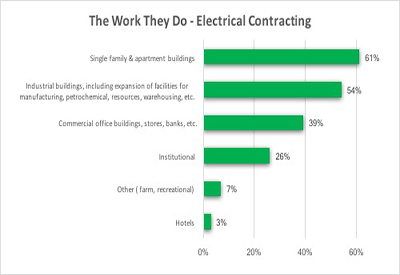LEDs and Their Possible Health Effects, Part 2

Oct 30, 2017
Part 1 presented findings from a review of possible health risks of LEDs, conducted by the European Commission’s Scientific Committee on Health, Environmental and Emerging Risks. LED lamps and displays appear to pose no direct adverse health effects among the general healthy population, but gaps exist in our understanding of potential LED health hazards, and other population groups may be at risk. Here in Part 2: more research results on the effects of LED lamps on general health, the eyes and the circadian system.
The Effect of LED lamps
No evidence was found as to an increased risk of photosensitivity to LED lamps when compared to other lighting technologies. Actually, the absence of ultraviolet radiation from general LED lamps may reduce the risk of photosensitivity for a number of these conditions.
But LEDs do have issues in terms of flicker, dazzle, distraction and glare.
Due to the point-source of some LED lighting, studies have shown that the type of light diffused leads to discomfort and glare.
Some lamps available on the market today incorporate “point” LED sources without diffusers, which can cause a glare when viewed. This was also reported to be a concern with some LED street lights.
Flicker from some LED lamps can result in stroboscopic effects. There are claims by a small number people of adverse health effects such as migraine or headaches. There appear to be no technical reasons why LED lamps need to flicker, since many models do not. This is why it is critical to carefully select your LED provider.
Additional aspects to consider
The worst-case viewing condition is generally on-axis viewing of a LED source; for example, staring at a screen or an LED lamp. If a source is safe for viewing on axis, it will be safe under all other viewing conditions at the same distance.
Flashing LED sources in the peripheral vision are more likely to cause distraction than those on axis. LED lamps used for area illumination are usually more energy efficient than other sources (e.g., incandescent lamps). For the same colour temperature, the blue light component of the optical emission is similar to an incandescent lamp. However, infrared (and possible ultraviolet) emissions will be greatly reduced, or absent, which might influence the normal human bioprocesses. This aspect is still under investigation.
Circadian system
This topic raises an important question: does optical radiation from LEDs and artificial light in general, which is present in indoor lighting and screens, have an effect on the circadian system in real life compared to natural light sources? Research will need to consider emission wavelengths, time of day and duration of exposure, as well as any other confounding factors, such as the activity being carried out, prior light history, and the age of subjects.
It is not currently known if the effects on the circadian system remain, are enhanced or reduced after repeated and ultimately chronic exposure, such as currently occurs in real life. Moreover, the potential disturbance caused by LEDs and/or artificial light to the circadian system remains to be investigated. Are these factors related to negative health effects, as appear to have occurred due to other circadian disturbances such as shift work?
Effect on the eyes
There is insufficient knowledge about the actual exposure to optical radiation from LED sources and the total exposure to all optical radiation sources. Information concerning the general healthy population’s exposure is needed to assess potential health effects. It is suggested that the exposure assessments should consider different age groups, i.e., babies, young children, adolescents, as well as adults into old age.
It was recognized that early-to-market LED lamps produced a significant blue emission. Further research is being conducted in order to improve LED lamps to make them similar to traditional types of lighting, such as incandescent lamps. However, exposure of the general population to optical radiation from LEDs is likely to be insignificant compared to exposure to natural light outdoors; nevertheless, any additional health burden must be considered.
Read Part 1: http://www.electricalindustry.ca/latest-news/3593-leds-and-their-possible-health-effects-part-1
Read the entire report on work conducted by the European Commission’s Scientific Committee on Health, Environmental and Emerging Risks: https://ec.europa.eu/health/sites/health/files/scientific_committees/scheer/docs/scheer_o_011.pdf
















